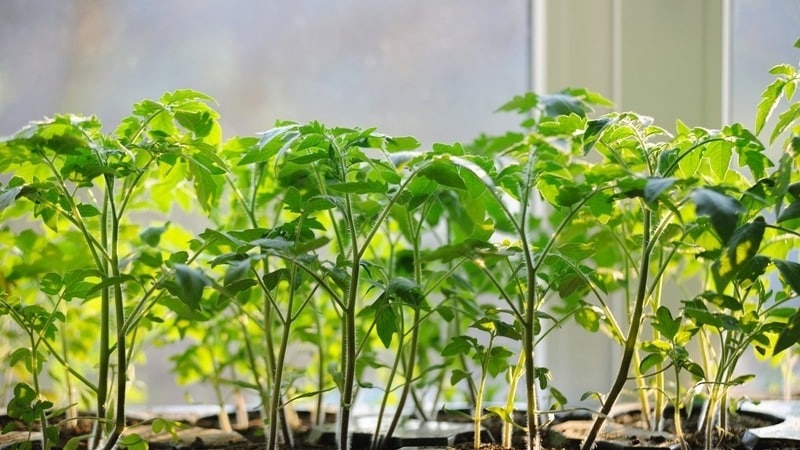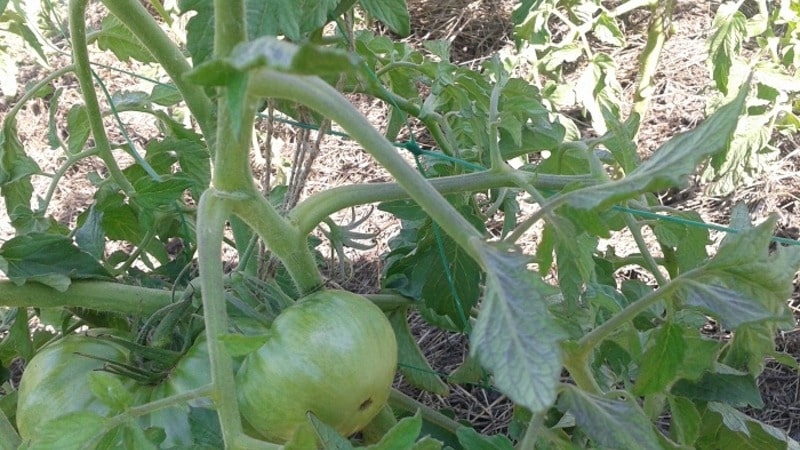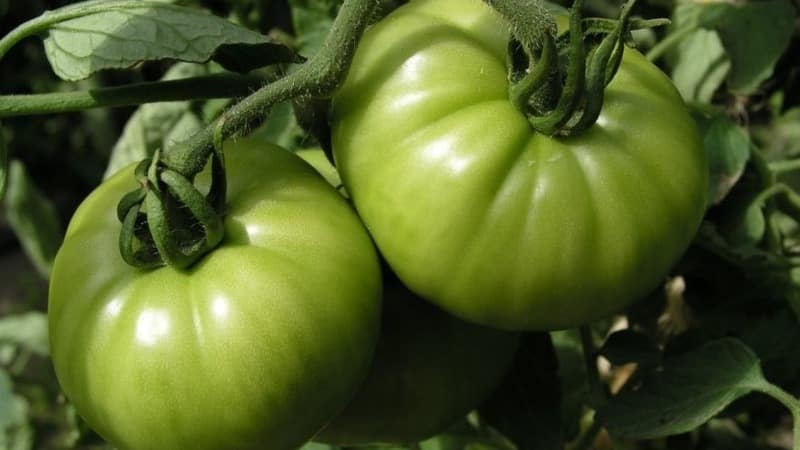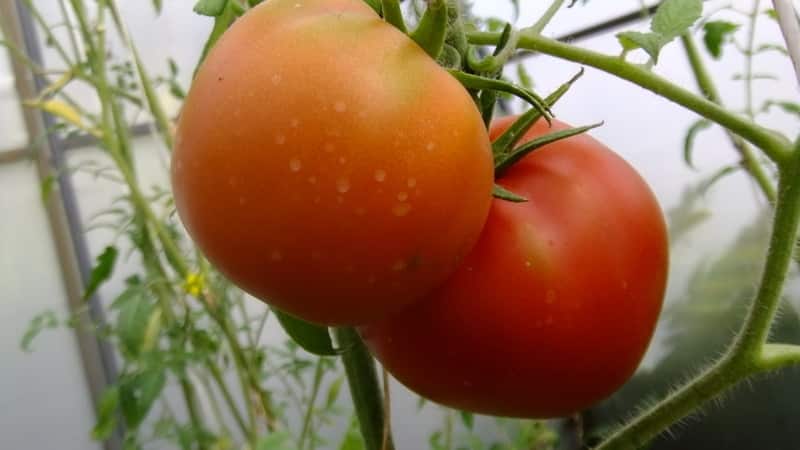A variety with an attractive name and extraordinary taste - the “Paradise Delight” tomato: growing and tasting
The Paradise Delight tomato has been known to gardeners for decades. Despite the latest breeding achievements, it retains its leading position not only in summer cottages, but also in markets. Large fruits with excellent taste fully justify the name of tomato.
It is for its taste and ease of care that it is so loved by gardeners in all regions of our country. The crop is happily grown in small areas and on an industrial scale. The presentation of ripe vegetables is so attractive that it invites you to taste heavenly pleasure.
Characteristics and description of the variety
A culture with the unusual name Paradise Delight was bred by Transnistrian breeders in the 90s of the last century. In 1997, the variety was included in the State Register. Initially intended for open ground in the southern regions, but later it took root well in protected structures.
Distinctive features
Indeterminate bush, height 1.5-1.6 m, powerful stem, dense foliage, dark green leaves, simple inflorescences.
Mid-season species, 110-120 days pass from the moment of seedlings to full ripening.
Productivity depends on growing conditions and care, but as a rule, from 1 sq. m harvest up to 8 kg of fruit.
It is highly resistant to diseases such as cladosporiosis, tobacco mosaic, bacterial spot, but is susceptible to late blight.
Recommended for cultivation in open ground, although it adapts well to greenhouse conditions in regions with cold climates.
The culture requires obligatory staking of tall plants and regular stepsoning.

Fruit characteristics
The average weight is 400-450 g; if agronomic rules are followed, the fruits reach up to 700 g. The shape is round, slightly flattened, the color is red. The taste is sweet, without sourness, the pulp is juicy, rich in vitamin C. There are 5-6 seed chambers, there are few seeds. The peel is dense, ribbed, and does not crack.
The species belongs to the salad variety; vegetables are ideal in salads, various appetizers, hot and vegetable dishes. Also used for conservation and processing for tomato products: juices, ketchups.
Ripe vegetables tolerate long-term storage and long-term transportation, which makes it possible to use the variety for commercial purposes.
The photo shows Paradise Delight tomatoes.
How to grow seedlings
Sowing seeds for seedlings begins 55–60 days before planting in the ground. Before sowing, the seed needs careful preparation.
Seed preparation
First, the grains are inspected for visible damage. Seeds that are dark in color or have a curvature are discarded. The remaining ones are checked for emptiness by immersion in a saline solution. To do this, dissolve 1 teaspoon of salt in a glass of water. Those grains that float to the surface after 10 minutes are not suitable for planting. Then the seed material is disinfected by placing it in a weak solution of potassium permanganate. After 20 minutes, the grains are washed with running water.
To improve germination, seeds are treated with growth stimulants, after which it is kept in the refrigerator on the bottom shelf for 5 hours.Such hardening further promotes rapid adaptation to outdoor conditions and strengthens the immune system.
Reference! The most used growth stimulants are Epin, Zircon, and Kornevin.
Before sowing, the seeds are germinated on damp gauze for 2-3 days at a temperature of +25 degrees. After germination of the sprouts, the grains are sown in the ground.

Container and soil
The soil is prepared from garden soil mixed with peat and river sand. IN the resulting mixture is added with 30 g of superphosphate and potassium sulfate. To disinfect the soil, pour a hot solution of potassium permanganate or steam it in the oven for 15 minutes at a temperature of 50-60 degrees. The cooled soil is laid out in planting containers.
You can plant in a common wooden box and in separate containers, such as: plastic cups, paper honeycombs, peat pots. When sowing into individual containers, further picking is not required. Small drainage holes are made at the bottom of the containers so that excess moisture does not stagnate when watering.
Sowing
The seeds are sown to a depth of 2 cm, sprinkled with the remaining soil on top, slightly moistened with warm, settled water using a spray bottle and left in a warm and bright room at a temperature of at least +23. The planting containers are covered with film for faster seed germination.
Reference! If the planting material is sown shallowly, it will germinate along with the shell, which will slow down the further growth of the seedlings.

Seedling care
After the sprouts appear, the containers are moved to a more illuminated place, but not in direct sunlight. There should be at least 13 hours of daylight. If there is a lack of natural light, add fluorescent lamps.
Further care of seedlings consists of timely moderate watering. Water with warm, settled water along the edge of the nursery with a tablespoon. After watering, the soil is loosened superficially.
Reference! Loosening promotes better penetration of oxygen to young roots.
When 2 true leaves appear, the seedlings are plucked, seating in separate containers. If the seedlings are left in a common box, the distance between the bushes is increased to 12-13 cm. When picking, non-viable plants are disposed of, leaving only strong, healthy bushes.
Reference! The picking procedure involves shortening the main spine by one third.
2 weeks before planting in the ground, seedlings begin to harden. To do this, it is taken outside in the daytime for 1 hour. Gradually this time is increased to 13 hours. Simultaneously with daytime hardening, the night temperature in the room is reduced to +14.

How to grow tomatoes
After 2 months, the seedlings are ready for transplanting. But if the soil has not warmed up to 15 degrees by this time, planting seedlings in the ground should be postponed. Otherwise, the bushes will not begin to grow, therefore, fruiting will take several days.
Landing
The soil is prepared 2 weeks before transplanting the seedlings. The soil is dug up and humus is added. You can add organic fertilizers, such as bird droppings.
Planting pattern: 60 cm – distance between seedlings, 65 cm – between rows. For 1 sq. m place no more than 2 plants.
Transplanted in the evening, after sunset, into shallow holes. After planting, the bushes are sprinkled with compost and watered well. Upon completion of the work, the seedlings are left to adapt to new conditions for 8-10 days.
Further care for the tomato Paradise Delight
Regular watering is established no more than 2 times a week. On rainy days, the amount of watering is reduced, and on dry days, on the contrary, it is increased. But in any weather it is necessary to control the level of humidity in the beds: tomatoes do not like waterlogging.
Water with warm water, under the root, without getting on the leaves. After each watering, the soil is loosened and weeds with roots are removed. Weeds are carriers of infectious diseases and habitats for many insect pests.
Since the crop is high-yielding, it requires additional fertilizing. First feeding applied in the form of a full complex of mineral fertilizers 2 weeks after transplantation.
Second time feed mineral complex during flowering. During this period, you can replace minerals with organic matter, for example, mullein infusion in a ratio of 1:10.
Next, the crop is fed once every 2 weeks until fruiting begins. Fertilizers continue to be mineral fertilizers or organic matter. During fruiting, in addition to basic fertilizers, potassium substances are added to speed up fruit filling. During the ripening period, there is no need for frequent fertilizing, as well as frequent watering.

Features of care and possible difficulties
They are tied to wooden pegs or metal rods as the bushes grow and develop. The stem is fixed in several places at once so that the bushes do not bend and are always in an upright position. In the future, fruit-bearing branches are also tied to the installed support so that they do not break from the weight of ripe vegetables.
Under the first brush, all the stepsons are removed, leaving stubs no more than 2 cm. After pinching, treat with a weak solution of potassium permanganate to avoid the development of infection. After the 4th fruiting cluster appears, the crown of the plant is pinched, thereby limiting its further growth.
Important. Form a plant with 1 or 2 stems. Under such conditions, the maximum yield is observed.
Diseases and pests
The tomato is immune to tobacco mosaic virus, bacterial spot and cladosporiosis. But without preventive measures, the risk of damage is high late blight.
Late blight is a fungal disease that develops at high humidity. Moderate watering is one of the main measures taken to eliminate the cause of the disease. Prevention also includes systematic loosening, removal of weeds with roots and regular ventilation of closed structures if tomatoes are planted in a greenhouse.
Attention! “Fitosporin” or copper sulfate, which is used to treat the soil and diseased plants, helps in the fight against late blight.
To destroy insect pests, chemical and traditional methods are used. But remember that the use of insecticides is possible only before the first ovaries appear.
As folk remedies, strong decoctions of onion peels and garlic are used, which are sprayed onto entire plants. Such decoctions repel flying insects from the beds. Mulching beds with straw protects the root system from the penetration of pests. Planting sharp-smelling plants next to tomatoes repels slugs and the Colorado potato beetle from the beds.
Nuances for open ground and greenhouse conditions
Greenhouse plants are much taller than their outdoor brothers. They need to limit their growth by pinching the top of their head.If growth is not stopped, beneficial substances will be spent on unnecessary branches.
The highest rates of fruiting were noted in the southern regions. In areas with a cold climate, the crop not only grows and develops more slowly than in the south, but the quantitative indicator is also significantly reduced. However, there are many who want to grow this particular type of tomato in the northern regions. The crop, planted in well-heated closed structures, adapts to greenhouse conditions and produces sufficient offspring.
When growing tomatoes for sale, 4 tomatoes are left on the fruiting branches. This technique promotes the formation of larger vegetables. When all formed tomatoes are left on the bunch, they grow smaller in size and weight.

Harvesting and application
Vegetables begin to ripen in July. The tomatoes are quite large and are ideal for fresh consumption. The variety belongs to the salad variety, so the tomatoes retain excellent taste in summer salads, in hot and vegetable dishes, as a varied snack, in baked dishes with meat. They make excellent freshly squeezed juice.
Ripe vegetables are also used for canning, marinades and pickling. But due to their large size, it will not be possible to prepare whole vegetables for the winter. Tomato is used for processing into tomato products, for example: adjika, juice, paste, ketchup.
Ripe vegetables are subject to long-term storage and can withstand long-term transportation without loss of presentation and taste. For this reason, entrepreneurs use the species for commercial purposes.
Advantages and disadvantages
The positive qualities of tomato include:
- good adaptation to weather conditions;
- high resistance to diseases;
- high fruiting rate;
- simple agricultural technology;
- possibility of breeding for sale;
- excellent taste of fruits;
- large vegetables;
- excellent presentation;
- long storage;
- versatility in cooking;
The negative aspects include the need for mandatory gartering and pinching of plants. But these shortcomings can be called conditional, since they do not require much time and effort.
Farmer reviews
The review will introduce you to the opinions of gardeners who grow tomato crops on their plots. Opinions about tomato are only positive, from which we can draw a conclusion about the reliability of the crop.
Olga, Voronezh: “I’ve been growing this variety for several years now and I’m not going to give it up. For me, to be honest, there is nothing tastier than a tomato. A big plus is immunity to cladosporiosis, which affects many tomatoes. The stem is tall and powerful, I tie up the bushes and the stepson. With proper care, the fruits reach up to 500 g.”
Vladimir, Bryansk: “The fruits ripen are really very tasty, top five, large in size, fleshy. I plant the tomato in a greenhouse, at a great distance from each other. The stems are powerful, the leaves are large. In the spaces between the bushes I will plant basil or some other herb. I lead the tomato into one main stem. There is enough harvest to eat and make juice for the winter.”

Conclusion
The heavenly delight tomato has established itself as a high-yielding species, immune to many diseases and well adapted to weather conditions. Despite its long existence in the tomato world, it has managed to maintain a huge number of fans who want to grow it on their plots every new season.The main reasons for this are the excellent taste of ripe vegetables, unpretentious care and a high fruiting rate.
The opinions of gardeners unanimously confirm that the name goes well with the taste of ripe tomatoes.